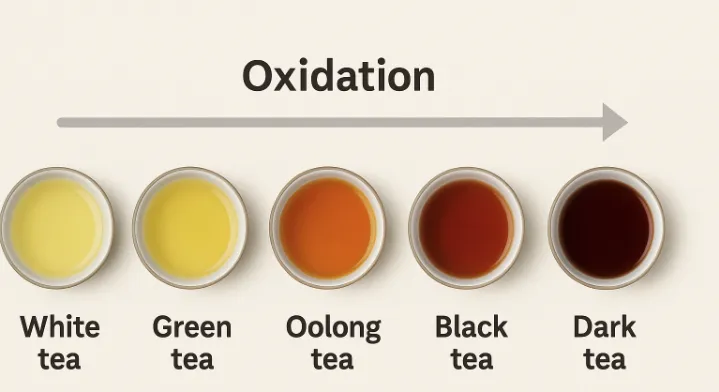
What a Tea’s Color Might Reveal About Its Origin
From jade green to deep amber, your tea’s color isn’t just pretty—it’s a map. Discover how hue reveals a tea’s altitude, region, and the hands that crafted it.
That Color? It’s Talking.
You’re swirling your cup and admiring the hue—deep red, pale jade, golden honey—but did you know it’s whispering secrets? That tint isn’t just aesthetic. It’s geography, harvest, and tradition steeped together.
Lighter Teas, Higher Places
Pale green or light yellow? Likely a high-grown tea from misty mountains—think China’s Fujian, Japan’s shaded Uji fields, or the foothills of Darjeeling. These shades often signal:
Low oxidation
Early harvests
Ultra-careful processing (read: hand-plucked with reverence)
Cool temperatures and fast drying keep these hues light and bright.
Darker Teas, Deeper Stories
Rich amber or copper? Welcome to the world of bold black teas from Assam, Sri Lanka, or Yunnan. These teas are:
Fully oxidized
Built for depth and strength
Nearly black or inky brown? That’s post-fermented royalty—like aged shou pu’erh, earthy and alive with terroir.
Same Leaf, Different Path
The same cultivar can glow jade or blush bronze depending on how it’s handled. Roasting adds warmth. Steaming keeps it green. Sun-drying deepens everything.
Processing, it’s more than chemistry—it’s culture.
Sip, See, Savor
Next time you brew, pause before the sip. Let the color tell its story. That golden glow? It might just be your first clue to the tea’s altitude, oxidation level, or harvest season.
Wanna Geek Out?
Explore more:
The Science of Tea Color: Oxidation & Pigments (Tea Epicure)
Tea Production Process (East African Tea Trade Association)
© 2025 Clemson Tea Farm. All rights reserved.
